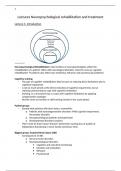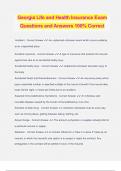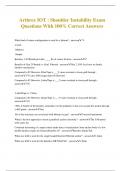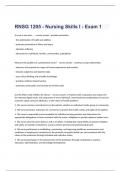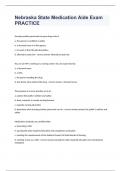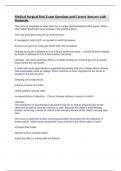Class notes
Lectures summary Neuropsychological rehabilitation and treatment (PSMNB-5)
- Course
- Institution
Samenvatting / aantekeningen (in Engels) van alle 7 colleges van het vak Neuropsychological rehabilitation and treatment (PSMNB-5) inclusief afbeeldingen. Summary / notes (in English) of all 7 lectures of the course Neuropsychological rehabilitation and treatment (PSMNB-5) including images.
[Show more]
